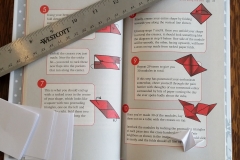Every week I hit the library, yard sales, bookstores, kindle and my own collection in search of something interesting to read. I thought I could start sharing what I’m reading each week and let you know what I liked and didn’t like. So here’s the first installment.
- How to Read Nature by Tristan Gooley
Gooley is one of the world’s foremost experts on natural navigation. For those of you not familiar with the term, natural navigation is land navigation using ones knowledge of nature and nature’s patterns. This book will tell you things like what plants and can tell you about the direction you’re facing or how the presence of certain birds can indicate the time of day.
You’ll learn a lot about observation and how to use your surroundings to live a more engaged and fulfilling life.
2. Look Big: and other tips for surviving animal encounters of all kinds by Rachel Levin
Look Big is a fun, quick read. It’s not just about surviving life and death encounters with animals. Levin is also full of advice on what to do when you come across raccoons and turkeys. I’ve come across wild turkeys, skunks and deer right in my front and back yard. It would have been nice to have read this book before then. But better late than never as they say.
3. Sitting Kills, Moving Heals by Joan Vernikos
I’ve written on this blog about the benefits of standing desks and the dangers of sitting too much. There’s really not a whole lot that needs to be added and I can’t believe there are so many books on the subject. Most of them can be boiled down “get up and move around more”. I mean, write a tweet or something but an entire book?
I’m also reading Get Up! : why your chair is killing you and what you can do about it by James A. Levine. I think the message is obvious from the title. Your chair is killing you! For goodness sake, get out of it; that’s what you can do about it! I might make a special trip to the library to return these two books early.
4. Mind Gym: achieve more by thinking differently by Sebastian Bailey
Your mind is like a muscle and you have to keep exercising it, blah, blah blah. I think the author needs to achieve a better book by thinking differently than all the other books saying the same thing. To be fair, I stopped reading this one early on so it might have been spectacular toward the end. However, you can buy it on Kindle for only $1.99 so it’s probably not spectacular toward the end.
5. Wits Guts Grit: all-natural biohacks for raising smart, resilient kids by Jena Pincott
I decided to give Jenna’s book a chance because it had the work hack in it. The premise is that the gut biome and the foods we put in it can affect our mood, memory and fortitude.
Most people understand that when you swallow medicine or a vitamin, it absorbs into your blood stream and affects your body and mind in extremely powerful ways. But then they shove their face full of sugar, colorings and artificial this-and-that without a clue these things act on us in the exact same way. This book looks at the foods we eat with a true understanding about how powerful they are.
This one was interesting, the writing was good and I liked the subject. But I never made it through the whole thing. Maybe someday I’ll come back to it. It’s $11.99 on Kindle but free as an audio book so the jury’s still out on this books true worth.
There you go. Five books I’ve been reading (or just paging through and then putting down with good intentions) recently. What books are you into? Let me know in the comments.





